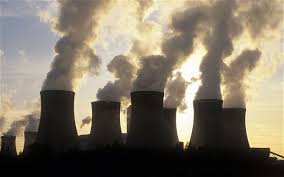Part 4 mainly focuses on the energy consumption in different cities, it’s amount, the type and of course way to control it. After the readings, I realized that one of the main problems is how to convince users to switch to more friendly sources of energy which however benefit the environment more that the user. This is because the more conventional sources may be better but come at higher costs. The way to go about the problem, I believe, is to inform people about the information the reading claims is hard to find and consolidate yet is so crucial – statistics! Personally, I believe that this is an easier and more effective form of communicating and it can imply the seriousness of the situation because it is precise. While most may think that it is always the urban areas that consume more energy, it is not true and varies depending on which area. I think this should give way for even local/city level authorities to have power and not just have centralized control in the hands of state level. I can see the impact of rising temperature levels for myself here in New York with fluctuating weather and soon, I believe there will be no seasons! On the topic of seasons, I believe that focusing on net energy consumption is a waste because as we consume less from heaters in winters and more from air conditioners in winters, their effect is evened out. What should be focused on however, are these sources of energy, the climatic condition directly affect energy back, like karma, in areas such as transportation, rising sea levels etc. I support the idea of breaking the policies down into energy, climate and governance. From all the policy recommendations given, I notice one key element that is needed and that is coordination. We have the right resources and ideas but to put them all into play and make them work, the only possible solution is to work together. Coming to the health sector, I partly disagree with the statement “All these tasks are a challenge, though they are easier for higher-income cities..” This is because I believe that the cities of higher income are also more developed and hence will also have more greenhouse gas emissions. Cities with lower income usually do not even cause that much harm to the environment for any investment to be made in preserving. However, I see where the statement stems from because without the basic infrastructure needed, the health of the people living in such areas is put at risk. The negative impacts on the climate range from extreme weather conditions and droughts to air and water quality deterioration. To put a stop to this, similar to as discussed before, I believe that policies, restrictions and strict rules/limits should be set on extents of pollution and green house gas emission. This step, again, should be implemented at every level, even the lowest, for a more personal action. However, the health of an individual and the impact of climate change on them also depends on individual factors such as one’s age, income, gender etc. and together, their density in certain areas. It is hard to stop somethings that have become so deeply entrenched in our daily life systems, however, it is these routines that one way or another lead to the climate change. We can not stop doing what we are, but we can definitely adapt. By understanding these climate changes, taking precautionary measures at an early stage so take take action well ahead of time, will help our case. Adapt and adjust or be left behind.


